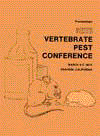Vertebrate Pest Conference: Proceedings

Vertebrate Pest Conference Proceedings: 6th (1974)
Date of this Version
March 1974
Document Type
Article
Abstract
The history of rodent control programs in New York State is reviewed, beginning with state-funded efforts in August, 1967. In 1969, Federal rodent control grant funds were used to establish four Model Cities programs. At its peak in 1970, programs were active in 18 counties, eight cities and villages, and in six Model Cities areas. The program encompasses all the major metropolitan areas of the state, serving some nine million persons. As part of the state program, the Rodent Control Evaluation Laboratory was established to investigate chemosterilants as a means of rodent control and to develop knowledge of pest rodent biology. Since then, the investigations program has turned to the problem of rodent resistance to anticoagulant rodenticides both in New York and other states in the eastern United States. Initial rat infestations, which ran 24.4 percent statewide in 1969, have been decreased 84 percent by late 1973. Similarly, in the same time period, unapproved refuse storage deficiencies were decreased 55.6 percent and exposed garbage conditions declined 44.7 percent. Rat bites showed a 40 percent decrease during these same years. By all measures, then, the program has been a success. Most programs have relied heavily upon anticoagulant rodenticides in the chemical control or rodent populations. Zinc phosphide, red squill , and norbormide are also used. Harborage removal and environmental improvement are stressed through active cleanups and educational efforts. During the four-year period, 1969-1972, some 177,000 tons of rat harborage were removed from 66,000 premises in the state.

